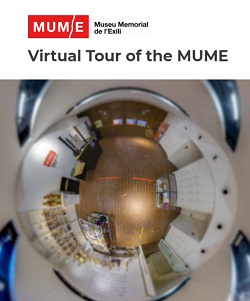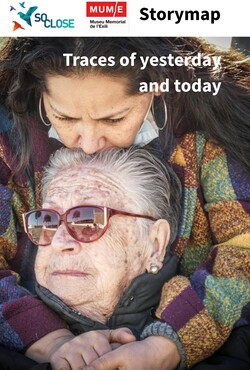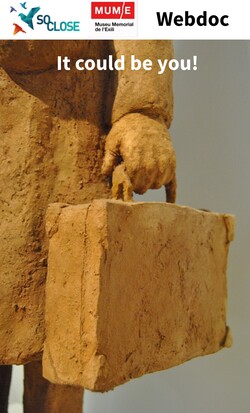The memory of Republican exile is still very much alive, not only for those who directly or indirectly suffered it, but for broad layers of today’s Catalan population who, for some time, have expressed a great interest in the setting up of a museum such as this.
An interest that, far from diminishing with time, has actually grown, to the point that at present it is not too much to say that exile has become an indelible element of reference of the contemporary Catalan and European collective imaginary. However, beyond the consideration of the general public, the issue of Republican exile and other exiles is a historiographic theme of prime importance. Even if we only look at the contemporary period, thousands and thousands of people were affected, many of whom lived many years (or the rest of their lives) in the host countries, where they usually made an important contribution. Many of them also reflected and left a record of their conditions and experiences. So there is an immense legacy of exile that, today, has not been sufficiently recovered, despite the efforts made by different institutions to this end. The aim is to bring dignity to the victims and explain our most immediate past and the historical and human costs of the fight for democracy to new generations, so that there is no repeat. And for this, systematic, constant and rigorous work is needed which approaches the task of recovering this legacy to guarantee its preservation and dissemination among the widest possible public.
It can be said that the process of constructing and constituting the museum goes from 2000 to December 2007, when it was inaugurated. The municipal body had spent some time weighing up the possibility of locating in its territory a museum style institution rooted in the history of the town, in order to promote it outside and exploit the tourism potential offered by the immense human flow that every year passes through it (around eleven million people per year). There were various proposals (such as the creation of a museum of Albera, the border, smuggling or exile) and at first setting up a centre that involved all of these issues was considered. To finally define the museum, the advice was sought of the Museum of the History of Catalonia. The very first contacts led to the conclusion that it should concentrate on a single theme (in order to explore it as thoroughly as possible) and that something should be chosen that responded to a deeply felt need and that, therefore, could be more far reaching than strictly local or regional interests. The theme of exile came nearest to these aims, as it was closely linked to local and regional history, had an unquestionable national dimension and allowed an international approach.
Summer 2001 saw the first approach to the main lines of the master plan, which was presented at the end of the following year. It was based on the conviction that a museum should not only have the function of an exhibition, but should also perform a task of research and promotion of the results obtained, which involved encouraging lines of research with Girona University. Moreover, to strengthen its dynamic character, alongside a permanent exhibition there would be temporary exhibitions every year. The preservation and development of the memory of Republican exile necessarily involves the analysis of the global phenomenon of exile (which should be extended to studying exiles of other eras and countries) and its place within the more general thematic of migrations. In a society that has suffered a political exile as important as that unleashed by the outcome of the Spanish Civil War and whose members so often throughout its history have had to emigrate to other countries for economic-social reasons (and who, inversely, have had to welcome in their territory people of very diverse origins who have adopted the country as their own), there is a special sensitivity towards these issues.
When approaching the conception of a museum, other international museums considered similar were taken into account, notably the American Family Immigration History Center, on Ellis Island (USA), Museum of the Jewish People – The Nahum Goldmann Museum of the Jewish Diaspora (Israel), Musée de la Résistance et de la Déportation de l'Isère (France), United States Holocaust Memorial Museum (USA) and Gernikako Bakearen Museo Fundazioa-Fundación Museo de la Paz de Gernika (Basque Country).
The Exile Memorial Museum is a project promoted by La Jonquera Town Council with the support of the European Union (FEDER-INTERREG III-A programme), the Government of Catalonia (Departments of the Presidency, Culture and Home Affairs, Institutional Relations and Participation) and the Diputació de Girona.
The final stage of the museum (2006-2007), had the support of the Government of Catalonia (Department of Home Affairs, Institutional Relations and Participation), which fostered the creation of the Exile Memorial Museum Consortium (with the participation of the Government of Catalonia, Alt Empordà Regional Council, Girona University and La Jonquera Town Council). In this way, the Exile Memorial Museum in La Jonquera is included in the network of Memorial Sites of Catalonia that the Memorial Democràtic has encouraged since 2005 and, with more determination, since November 2007 when the Catalan Parliament passed the Memorial Law.
The MUME Consortium is one of the headquarters of the Network of Catalonia Memory according to the order of the Generalitat de Catalunya IRP / 91 / 2010 of February 18, 2010.




